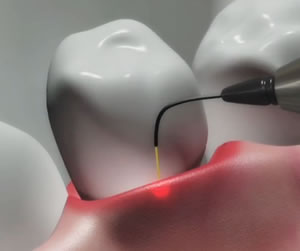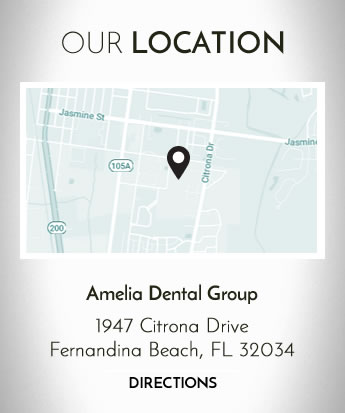What is a laser and how does it work?
A laser is an instrument that produces a very narrow, intense beam of light energy. When laser light comes in contact with tissue, it causes a reaction. The light produced by the laser can remove or shape tissue, destroy oral bacteria and promote tissue healing
Are lasers used in dentistry?
Yes, lasers have been used in dentistry since 1990. Lasers can be used as a safe and effective treatment for a wide range of dental procedures and are often used in conjunction with other dental instruments.
How are lasers used in dentistry?
Dental lasers can be used to:
- reduce the discomfort of canker and cold sores.
- expose partially erupted wisdom teeth.
- remove muscle attachments that limit proper movement.
- manage gum tissue during impressions for crowns or other procedures.
- remove overgrown tissues caused by certain medications.
- perform biopsy procedures.
- remove inflamed gum tissues and aid in the treatment of gum disease.
- remove or reshape gum and bone tissues during crown lengthening procedures.
- promote regeneration of gum tissue and bone in the treatment of gum disease.
- help treat infections in root canals.
- speed up tooth whitening procedures.
What are the benefits of using dental lasers?
There are several advantages. Dentists may not need to use a drill or administer anesthesia in some procedures, allowing the patient to enjoy a more relaxed dental experience. Laser procedures can be more precise. Also, lasers can reduce symptoms and healing times associated with traditional therapies; reduce the amount of bacteria in both diseased gum tissue and in tooth cavities; and control bleeding during surgery.
Are dental lasers safe?
If the dental laser is used according to accepted practices by a trained practitioner, then it is at least as safe as other dental instruments. However, just as you wear sunglasses to protect your eyes from prolonged exposure to the sun, when your dentist performs a laser procedure, you will be asked to wear special eyeglasses to protect your eyes from the laser.
How can I be sure my dentist is properly trained to use a laser?
Ask your dentist questions about the extent of his or her laser education and training. Make sure that your dentist has participated in educational courses and received training by the manufacturer. Many dental schools, dental associations, and the Academy of Laser Dentistry (ALD) offer dental laser education. The ALD is the profession’s independent source for current dental laser education and credentialing.
How will I know if treatment with a dental laser is an option for me?
Ask your dentist. Although the laser is a very useful dental instrument, it is not appropriate for every dental procedure.
World’s First & ONLY Scientifically Proven
FDA Clearance for *True Periodontal Regeneration™

The LANAP protocol is the world’s first and only scientifically proven laser gum disease treatment with FDA clearance for True Periodontal Regeneration.
The LANAP protocol utlitizes the unique PerioLase® MVP-7™, an Nd:YAG free running pulsed laser requiring specific knowledge and skills derivative of the LANAP protocol.
To you, the patient, this means:
- No cutting
- No stitches
- Less pain
- Regeneration of bone and tissues lost to gum disease
- Hope for hopeless teeth
- Less swelling
- Less tissue removed
- Faster recovery
The LANAP protocol:
- Eliminates the infection
- Allows removal of only diseased tissue without removing any healthy tissue
- Maintains the height of the tissue around teeth
- Minimizes pain and discomfort to patient
- Closes the periodontal pocket to allow healing – regeneration – to take place
Controlling periodontal disease makes it possible to save and restore otherwise hopeless teeth.
Treatment Procedure
A) Periodontal probe indicates excessive pocket depth
B) PerioLase® MVP-7™ laser energy selectively vaporizes bacteria, endotoxins, diseased tissues, and denatures pathologic proteins
C) Ultrasonic scaler tips remove root surface tartar
D) Bone is modified to release stem cells
E) PerioLase MVP-7 finishes cleaning pocket, stimulates natural growth factors, and aids in sealing the pocket closed so new germs cannot enter
F) Healing of gums to clean root surface occurs
G) Bite trauma is adjusted
H) Tissues and bone regenerate for true healing

The LAPIP™ Protocol for Saving Ailing & Failing Implants

The LAPIP protocol is a minimally-invasive approach to treating ailing and failing dental implants.
The LAPIP protocol utilizes the unique PerioLase® MVP-7™, an Nd:YAG free running pulsed laser requiring specific knowledge and skills derivative of the LANAP protocol.
To you, the patient, this means:
- Protect implant investment
- No cutting
- No bone grafting
- No stitches
- Less pain
- Less tissue removed
- Less recovery time
- Less bleeding
- Less swelling
The LAPIP protocol:
- Allows removal of only diseased tissue without removing any healthy tissue
- Eliminates the infection
- Helps maintain the height of the tissue around implants
- Minimizes pain and discomfort to patient
- Closes the periodontal pocket wound to allow healing to take place
Treatment Procedure
A) Periodontal probe indicates excessive pocket depth
B) PerioLase® MVP-7™ laser energy selectively vaporizes bacteria, endotoxins, and diseased tissue; and removes titanium corrosion contaminants in soft tissue around implant
C) Ultrasonic scaler tips remove debris from implant
D) Bone is modified to release stem cells
E) PerioLase MVP-7 finished cleaning pocket, stimulates natural growth factors, and aids in sealing pocket closed so new germs cannot enter
F) Healing of gums to clean surface occurs
G) Bite trauma is adjusted
H) Regeneration of bone around implant


